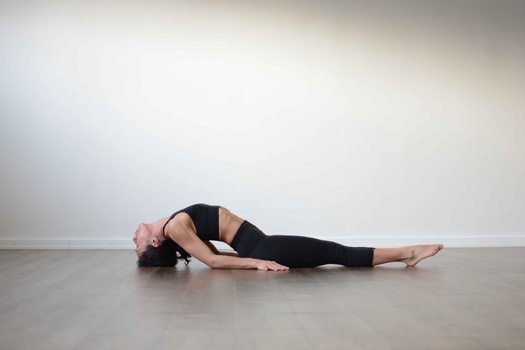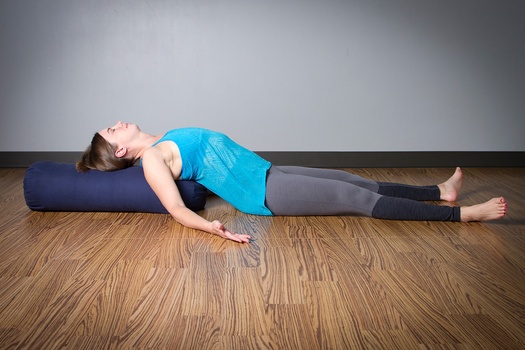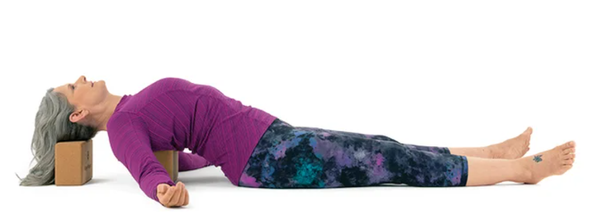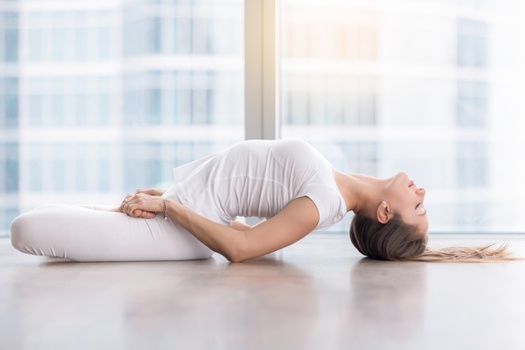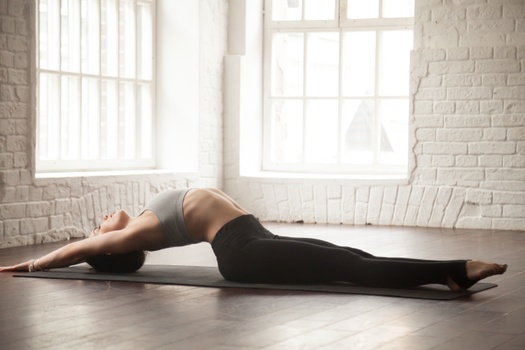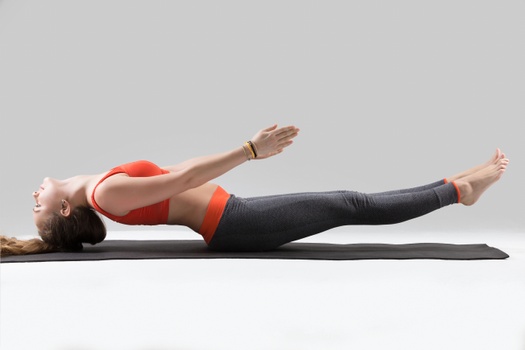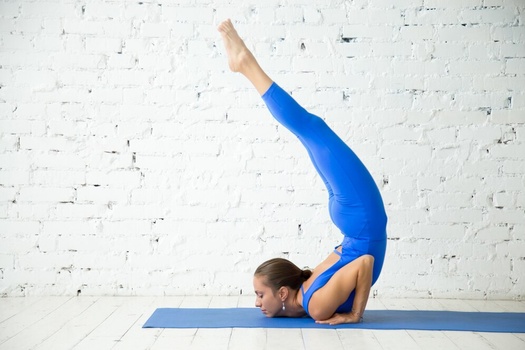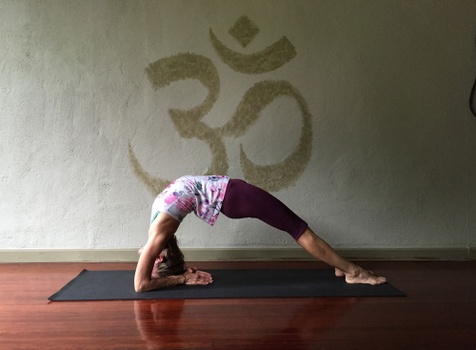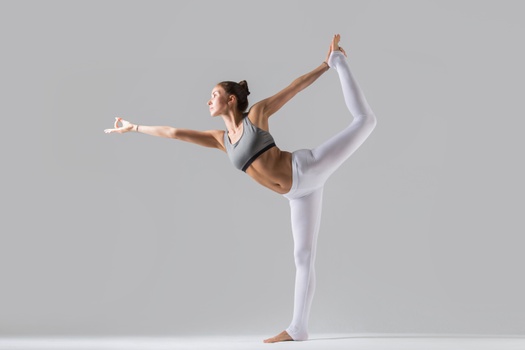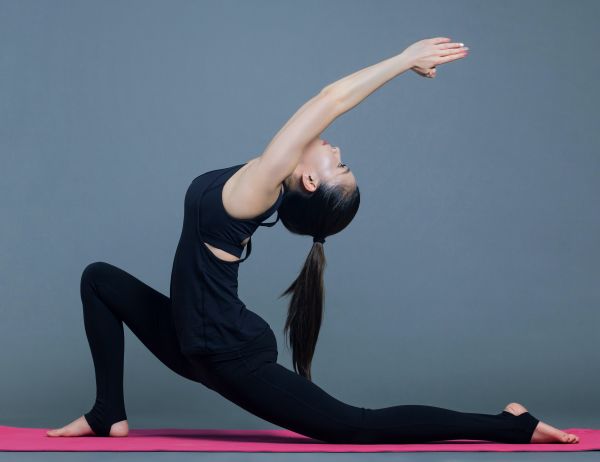For beginners, the Matsyasana practice is divided into four different parts below:
Part 1 - Preparatory Poses for Matsyasana
Warming up the shoulders, spine, neck, and low back is crucial to accomplishing the perfect fish posture.
The following are some warm-up yoga poses to get your activate your muscles and get your blood moving:
1. Ustrasana (Camel Pose) - This pose is also known as kneeling back-bend. Start by standing on your knees, keeping your core muscles stable and your spine lengthened. Inhale to expand your chest, and begin to bend your neck backward.
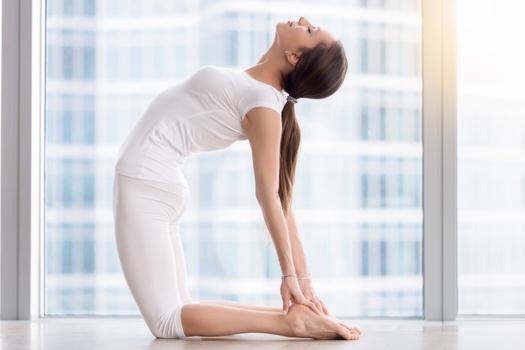
Slowly expand your chest, arch your lower back, and hold both ankles with your fingers. Now, perform an elongated inhale and hold the pose as you exhale. This asana opens all of the necessary muscles required for Fish pose.
2. Salabhasana (Locust Pose) - This is a beginner-friendly back bend pose and an excellent way to strengthen the lower back and core muscles. Start by lying on your stomach and engaging all of your limbs and core.
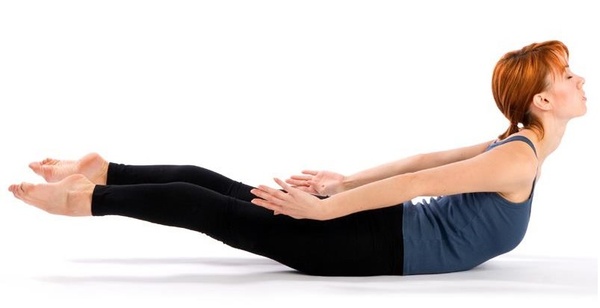
Next, inhale, lift your legs off the mat, and hover your arms at your sides. Keep your gaze directed upward. Hold this pose here for 10 to 60 seconds.
Part 2: Step-by-Step Instructions to Perform Matsyasana
The following are steps to practice Matsyasana or Fish pose:
Step 1- Inhale and start by sitting in Lotus or Staff pose. Take a few deep breaths.
Step 2- Begin by lowering yourself down entirely on the yoga mat.
Step 3- Bring your arms under your lower back with your palms pressing on the mat right below your tailbone.
Step 4- Take another deep breath, and keep the crown of your head on the ground.
Step 5- Now, continue to expand your chest muscles with your next inhale and gently lift your neck, spine, and chest off the mat, as if a string is pulling them all together upward to the ceiling.
Step 6- Ensure that your back maintains a curve while your elbows and palms press against the yoga mat to support your spine.
Step 7- Relax your body with deep inhales and exhales while holding Fish pose.
Step 8- Hold this pose here for a few seconds, and then gently release your chest, neck, and spine in chronological order.
Breath Awareness:
Inhale: While getting into the starting position, while raising your neck and spine, and while placing your arms below the low back.
Exhale: While expanding your chest upward and during the posture hold.
Performance Duration for Beginners: Hold Matsyasana for 15-30 seconds.
Performance Duration for Advanced: Hold Matsyasana for 60-90 seconds.
Part 3: Things to Keep in Mind
While practicing the Fish pose, your neck and spine are held in a precarious position. Thus, it’s important to keep in mind some of the following posture cues:
Avoid straining your head or neck: Holding your head, neck, and spine in Fish pose for a prolonged duration without any prior strength training can potentially lead to muscle cramps or serious spinal injuries. In order to first build enough strength for prolonged holds, try taking little breaks every few seconds.
Stabilize your head: Don't disconnect the crown of your head away from the ground. Try to keep your head in line with your neck, spine, core, and tailbone.
Don't over-arch your back: The most common mistake that most practitioners make during Matsyasana is overarching their lower back and minimizing the arch in their upper back. Instead, this should be vice-versa. To fix this problem, actively engage your core muscles and tuck your tailbone flat to the mat. Now, try to arch your upper spine via pressure from your palms as they press into the mat.
Part 4: Relaxing Poses After Matsyasana
Make sure you’re relaxing your spine, upper back, and neck in counter yoga positions to make sure that it returns to its neutral shape.
To relax, here are a couple of counter yoga asanas to perform after your Fish pose practice:
1. Pavan Muktasana (Wind Release Pose with Head Up): After your Matsyasana practice, lie on your back with the head, neck, shoulders, and spine relaxing on the ground. Now, press your neck, core, and spine into the yoga mat and inhale deep.
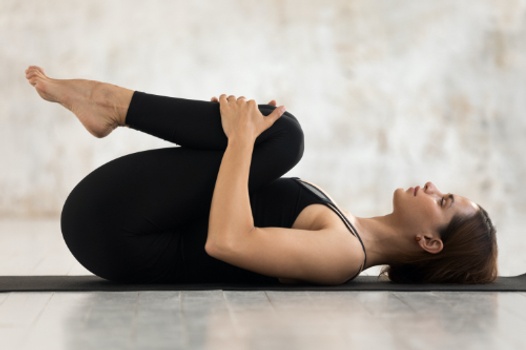
Next, bring your legs close to your chest one by one, and hug your legs together with both your arms. Inhale and exhale for 2-3 minutes in this position, close your eyes, and keep your spine flat on the mat to relax your whole body.
2. Shavasana (Corpse Pose): Continue to move from the Wind Release pose into Corpse position. Release both your legs back on the yoga mat and extend them on the floor. Spread your legs and arms slightly at your sides.
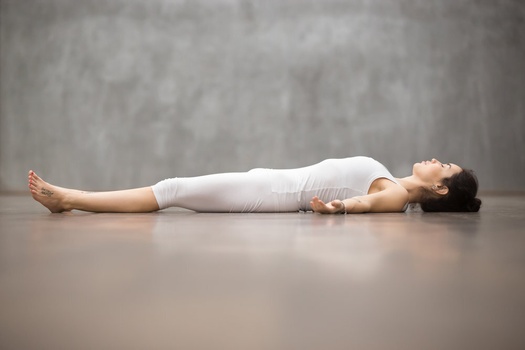
Close your eyes and take a few deep breaths in this position. Concentrate on the movement of your breath from the toes of your feet to the top of your head. Remember, the more focused you are, the better you can identify any muscle tension in your body and relax thoroughly.
